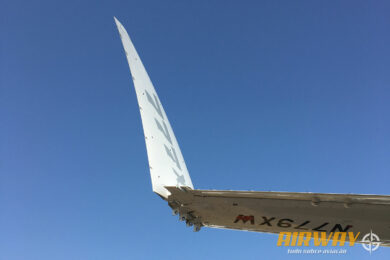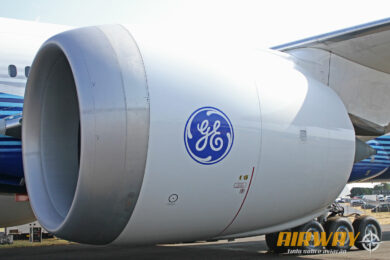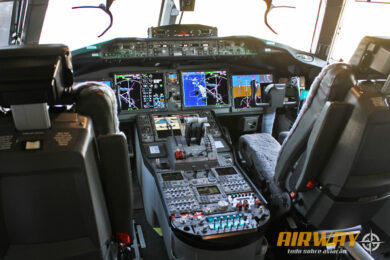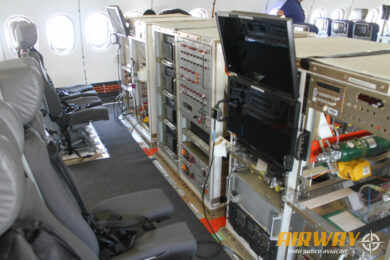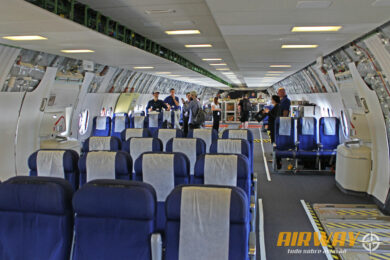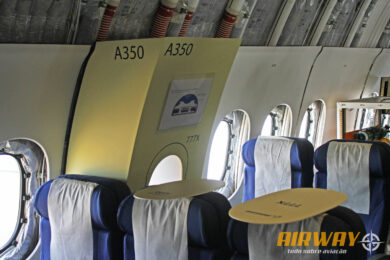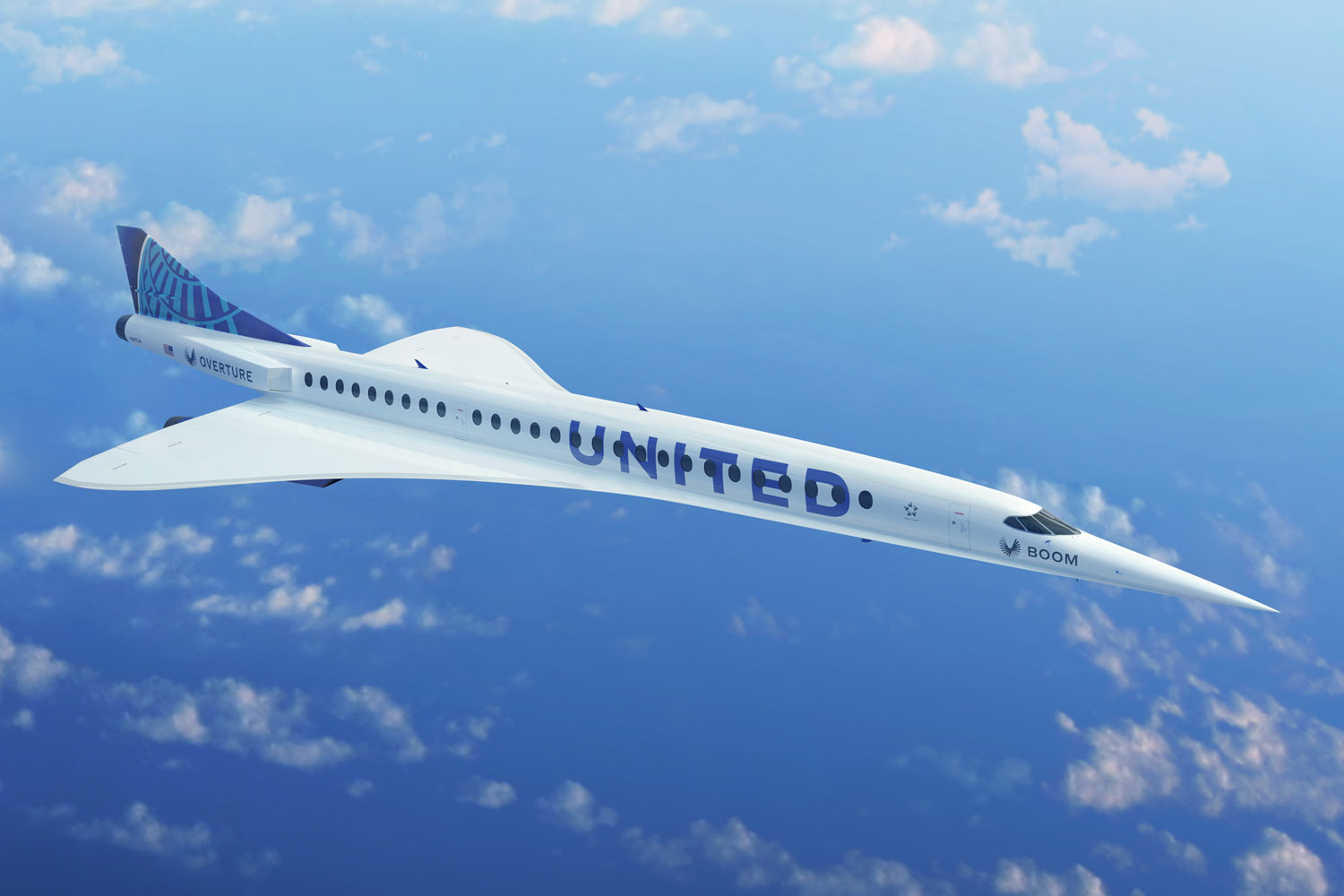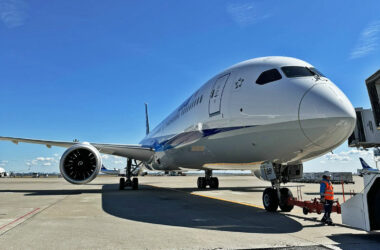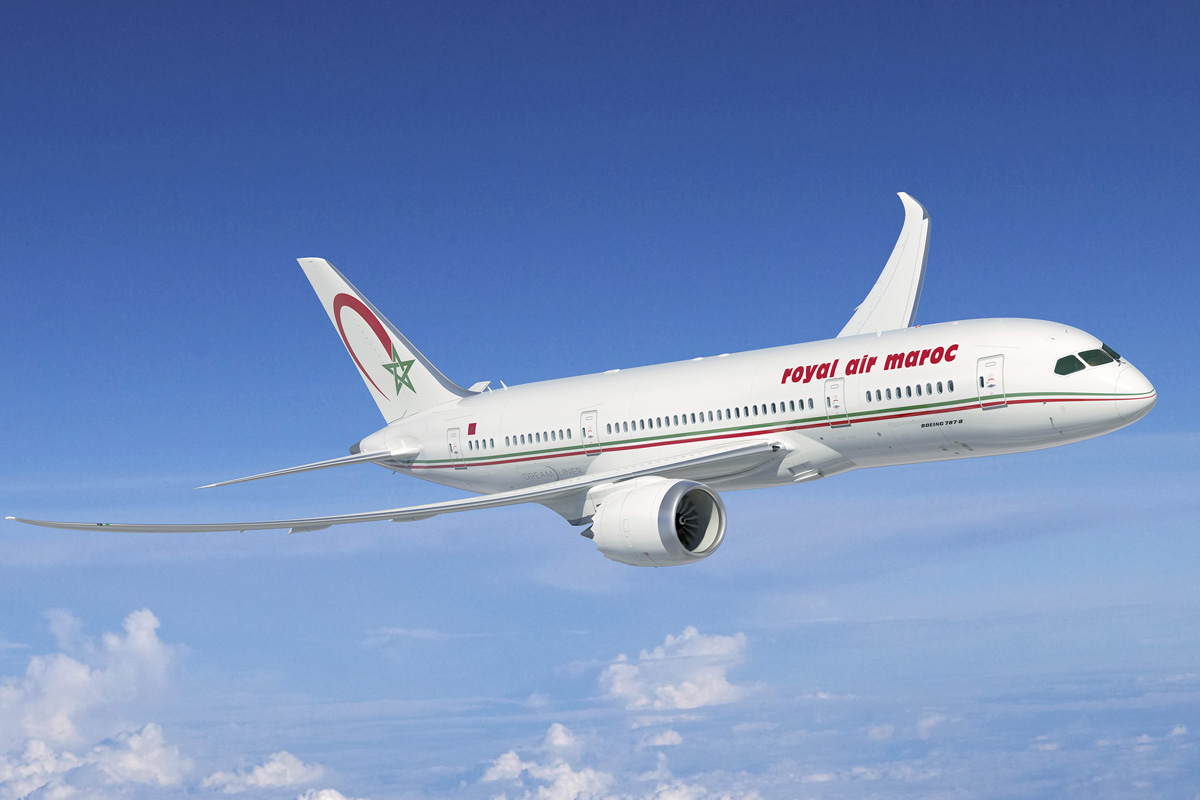Both are the largest members of their families, with the capacity to carry 230 and 426 passengers, depending on the configuration. But for now, the 777-9 and 737 MAX 10 at the Farnborough Airshow in the UK are just flying labs, used for the certification program.
Air Data News had the opportunity to tour Boeing’s two new commercial jets on Sunday before the opening of the biggest aerospace event of the year.
World’s largest twin-engine passenger jet
The 777-9, the highest-capacity variant of the “triple seven” ever built, is an impressive aircraft. It’s nearly 70 meters long, just like the Boeing 747, but the 777 uses just two engines instead of four.
That’s why GE developed the GE9X, the world’s largest turbofan, with an internal diameter of 3.4 meters. In person, seeing the engine and the 777 itself make us feel tiny, a feeling reinforced by the massive main landing gear.
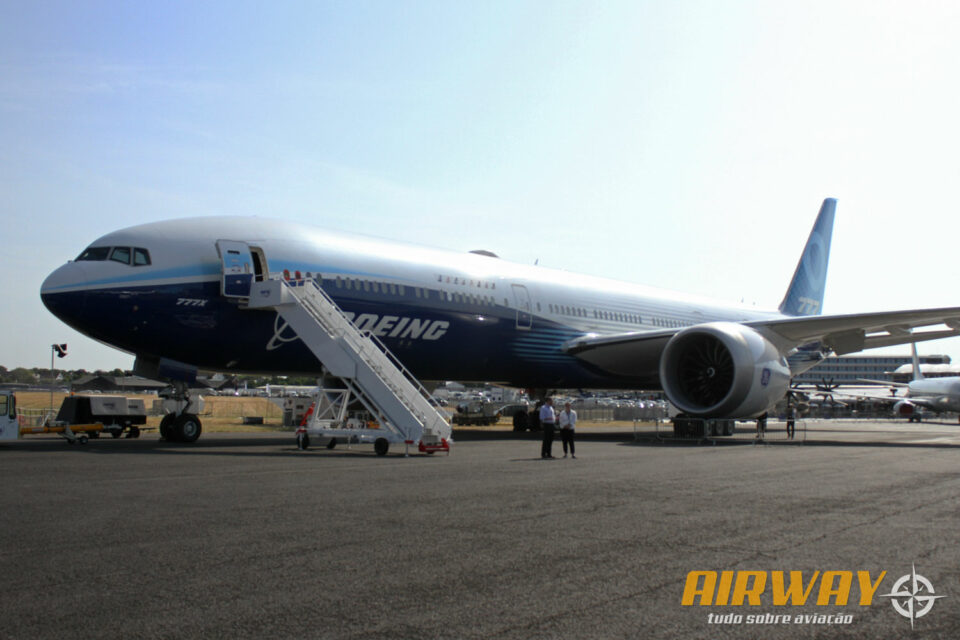
The 777-9 at Farnborough is the first test aircraft, known by the designation WH001 and registration N779XW, which first flew on 25 January 2020.
The interior of the aircraft is filled with pressurized water tanks that are used to control the widebody’s center of gravity as it flies without the weight of passengers and cargo.
In addition, there are workstations for engineers, equipment and sensors, as well as some economy class seats. According to one official, 10 to 25 people participate in test flights, depending on the purpose.
Our attention was drawn to a small “box” attached to the side of the cabin which read “A350“. Yes, Boeing makes a point of reminding visitors about how the 777 is wider than its European rival.
One of the most curious aspects of the 777X is the wingtip retraction system, which folds when the giant is on the ground. It was a solution designed by Boeing to avoid the need to adapt airports to accommodate its wingspan in flight, of 71.75 m – with the tips retracted, the jet is only 64.82 m.
Variable height landing gear
Alongside the 777X is the 737 MAX 10, the largest model in Boeing’s popular single-aisle jet family. It is almost 44 meters long, or 13.3 m longer than an old 737-200.
The “Dash 10”, as Boeing officials refer to it, is a response to Airbus’ A321neo, but the aircraft carries fewer passengers and a shorter distance. Yet it has been an attractive alternative for airlines operating the 737 MAX.
Boeing took the second MAX 10 prototype to the UK. In the US, in addition to the first plane, there is a third being completed, the onboard team said.
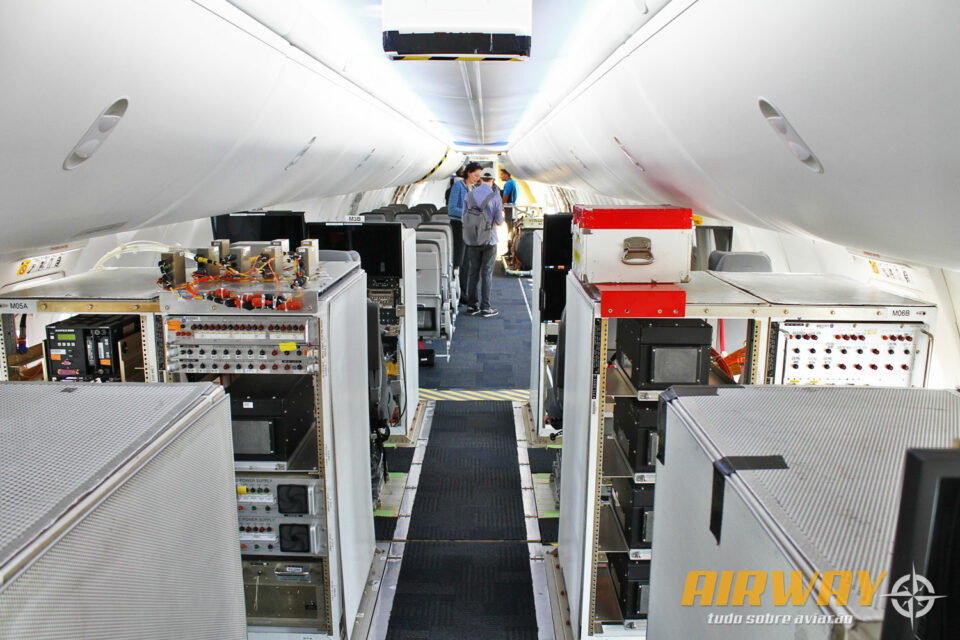
Unlike the immensity of the 777-9’s cabin, the 737 MAX 10 requires attention when moving around its interior, which is equipped with luggage racks, in addition to equipment similar to the “big brother”.
Like the 777X, Boeing had to look for an unorthodox solution to get around some of the problems of stretching a plane so far. In this case, the problem involved the short landing gear.
As the manufacturer wanted to keep as many points in common with the other versions and the MAX 10 needs the fuselage to be further from the ground so as not to crash during takeoff, Boeing decided to stretch the landing gear.
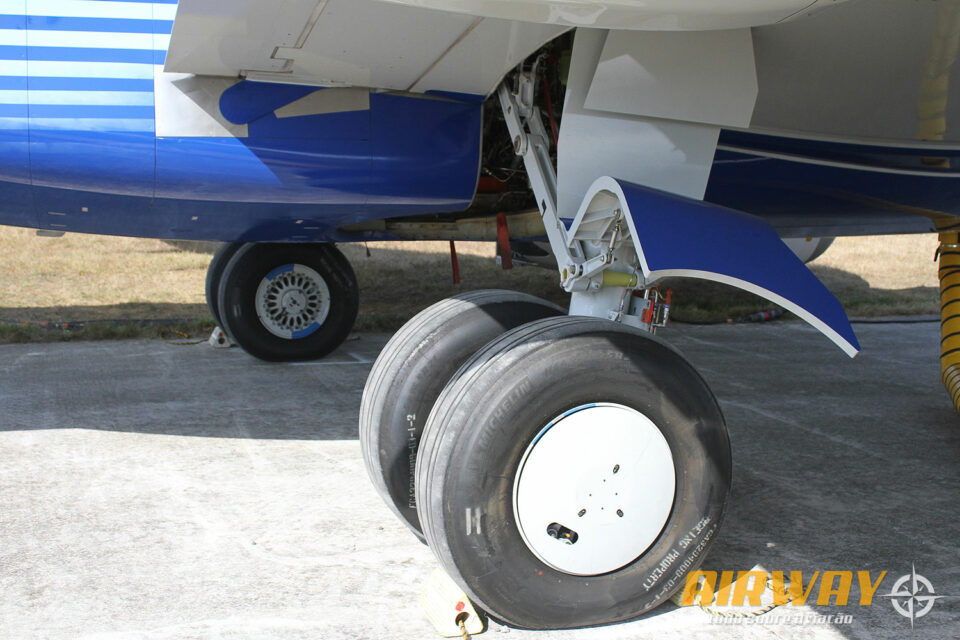
But that only happens during takeoff and automatically, explained one of the heads of the test program. There is no interaction from the crew in raising the height by about 45 cm, enough to avoid a scratch at the rear.
Although they promise a lot, both the 737 MAX 10 and the 777-9 still have their future customers worried. That’s because both certification programs are behind schedule and with unreliable predictions about when they will finally be available to take on commercial flights.
The visit of the two jetliners to the UK, however, is a good chance for Boeing to remember the virtues of both.


